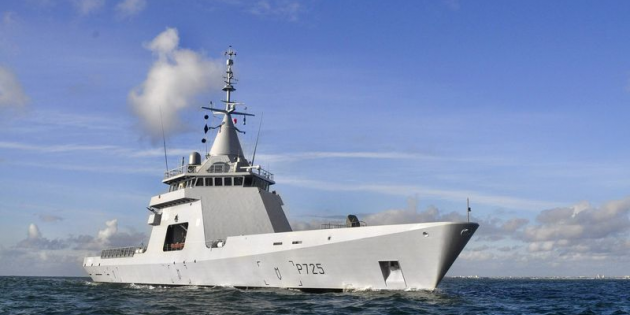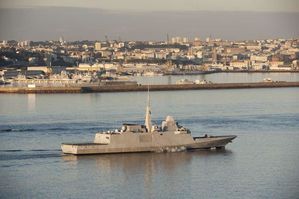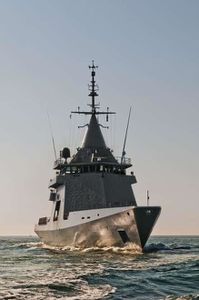
Oct. 23, 2012 - By PIERRE TRAN Defense News
PARIS — Chief Executive Patrick Boissier, who comes from a civil shipbuilding background, is pushing DCNS further into a lean manufacturing company, seeking a 30 percent improvement in performance.
The company’s championship productivity plan, launched in 2009, seeks a doubling of annual sales, from around 2.5 billion euros ($3.25 billion), within 10 years. As part of its growth strategy, DCNS seeks to win export orders with offers of offshore patrol vessels (OPVs) developed with its own funds, and ocean-going and littoral submarines.
Back in the domestic market, DCNS is expected to fight for a share of reduced military spending as the government trims the budget deficit.
Q. With talk of the French government delaying orders for the FREMM multimission frigate and Barracuda nuclear attack submarine, do you think the defense budget will help DCNS in offering naval assets?
A. There is an extraordinary development of the economy of the sea — transport, information circuits, energy and mineral resources. The sea has become more important in geostrategy, with claims such as in the South China Sea. There is the opening of the Northeast and Northwest Passage, possible opening up of the Arctic for commercial exploitation, and widening of the Panama Canal.
All that contributes to what we call the “maritimization of the world.” The [defense] white paper is being written and it’s an occasion to emphasize this maritimization, and to influence the multiyear defense budget law to take account of this importance.
The defense budgets are obviously constrained in Europe, they are particularly in France, but I have high hopes the multiyear budget will allow the maintenance of a priority for the means to exploit this wealth.
Q. What programs are important?
A. There are the programs tied to deterrence, which are ringfenced. There are the Navy’s first rank assets, the carrier group, frigates, nuclear attack submarines, etc. There are two major programs — the FREMM and Barracuda — which go beyond 2020. Then there are the assets for security at sea, and that’s what needs developing today. Some assets are coming to the end of their life. French maritime interests require assets for naval presence, surveillance, anti-drug trafficking, anti-piracy and other missions. So, OPVs or corvettes, surveillance frigates and support vessels.
Q. Thales has 35 percent in DCNS as industrial shareholder. Is 35 percent too big, or too little?
A. I think this is excellent for various reasons. Thales’ entry into DCNS meant DCNS was no longer a 100 percent state-owned company. That opens new horizons, different ways of doing things, widens the board of directors, brings in people with different vision. Secondly, this ended a domestic competition in naval business and helped create a bigger group, which is one of the leaders in Europe, if not the leader in a number of sectors.
Third, the merger allowed a mix of different cultures, [brought] together people with different approaches and allowed the company to go forward.
Q. Do you compete with Thales for exports?
A. It’s true in certain cases we’ll find ourselves in the same market, that’s inevitable. It’s relatively rare we’re in direct competition. We’re generally in more complex combat systems, like the ones we have onboard FREMM and Horizon frigates, and we have combat systems built for French systems with Thales equipment and MBDA missiles, while Thales Netherlands is generally on smaller vessels, equipped with foreign or American equipment.
Q. DCNS is active in exports. Can you give an update on prospects?
A. The American market is reserved for American producers. We envisage entering the market through an agreement with an American partner, VT Halter, to make a joint offer for the U.S. Coast Guard OPC [offshore patrol cutter]. We’re offering a frigate hull design derived from a design we have already built. The problem is to find a hull that meets needs expressed by the U.S. Coast Guard, which wants a vessel around 3,500-4,000 tons. We’re at the size of a very large OPV. In certain countries it would be a corvette, in others it would be a frigate. It will be a derivative because what the Americans are interested in is a sea-proven design. It won’t be the FREMM — we have other frigates. It will be just the ship design, with American systems.
Q. And other export markets?
A. The biggest and fastest-growing market is the rest of the world — excluding China. Southeast Asia, India — which has a very large program — Malaysia, Thailand, Singapore, etc. South America, mainly Brazil. The third zone is the Middle East — large programs in Saudi Arabia, UAE, Qatar, Kuwait and, to a lesser extent, Bahrain and Oman. We have deliberately expanded our product range to cover these countries’ needs. DCNS used to build only well-armed frigates, but we have expanded to the Gowind range, which goes from OPV of the Adroit type to the corvette design we have sold to Malaysia.
Malaysia signed a letter of award, which is binding, with the Boustead shipyard, and Boustead has signed a letter of award with us for the design, and we’re helping them with combat systems. The next step is transfer of design and building the ship.
In Saudi Arabia, there is modernization of four frigates and two tankers bought under the Sawari I contract. It’s a deal that’s been discussed for some time in Saudi Arabia, and I hope it will be concluded in the near future.
India has expressed a need for 24 subs. There are six Scorpenes; there will be others behind. India wants the next program to be much more national than the Scorpene. There is a request for a design. We are in competition with others.
Canada is a large potential market because the Canadians have requirements to develop and renew their fleet. They have a frigate program, and also interest in ships of the command and projection type and a potential submarine program.
In these three areas, DCNS has responses. We are certainly not the only ones.
Q. What happened to talk about dividing up export regions between European companies?
A. In subs, the number of programs is so limited, each deal is fiercely contested. Neither DCNS nor HDW can afford to say, “I am not interested in this country.” There aren’t 10 deals a year, it’s more like one every two years. Poland? France has excellent relations. There’s no reason we’ll abandon Poland.
The real problem is DCNS and HDW had the main submarine export market, with some Russian subs. That’s over. You have the Turks who are beginning to develop, the Indians might export, and after tomorrow perhaps the Brazilians. Today, the Koreans and Chinese are already present in the market.
Q. Have you talked to ThyssenKrupp Marine Systems?
A. You can’t just look at Germany. We have different strategic positions [in Europe]. DCNS is vertically integrated in defense; we have some civil but not in ships. We don’t do civil shipbuilding. Design, building, integration of systems, development of systems, support and service. We’re integrated in naval. It’s a strength.
The most different is Italian. Fincantieri is a platform maker, which builds ferries, offshore platforms and military. Finmeccanica builds systems and equipment, and also works in aeronautics and space, civil and military. An alliance between DCNS and Fincantieri is only an intersection between the two. And it’s a very small intersection between the two. It’s very difficult to do something like that.
Navantia? We worked as partners for a number of years on the Scorpene sub, and our interests diverged and we ended our collaboration two years ago. Now we have good relations with Navantia.
Q. DCNS used company money to develop the Gowind Adroit OPV and offered technology transfer for local assembly. Is this the business model for exports?
A. There is not one model for exports; there are models adapted to clients’ needs. There are countries which don’t have the means or will to build the ships; there you simply export. Then there are countries, which are increasing in number, which want to build a defense industry and want to use orders to acquire technology. When you sell technology, you create a potential future competitor.
Q. How about the growth targets?
A. We’re on track with these targets. We launched the program in 2009; since then sales have grown regularly. They’ll grow in 2012.
Our capacity to satisfy the client has increased. We’re able to build higher quality ships, we have a bigger range. We’re capable of delivering a product at more competitive prices than before. We can design a product 30 percent cheaper compared to three years ago.
On existing programs where the design is frozen, we’re working on production. We’ve halved unit costs with suppliers in some areas. We’re working with suppliers, we’re looking to buy for off shelf rather than design specific.






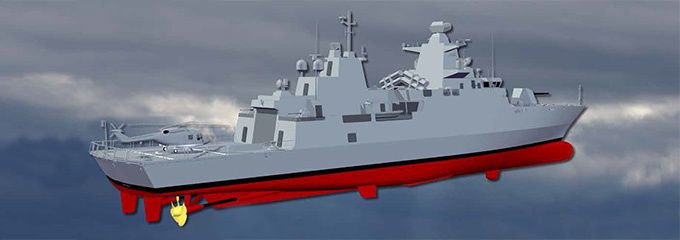






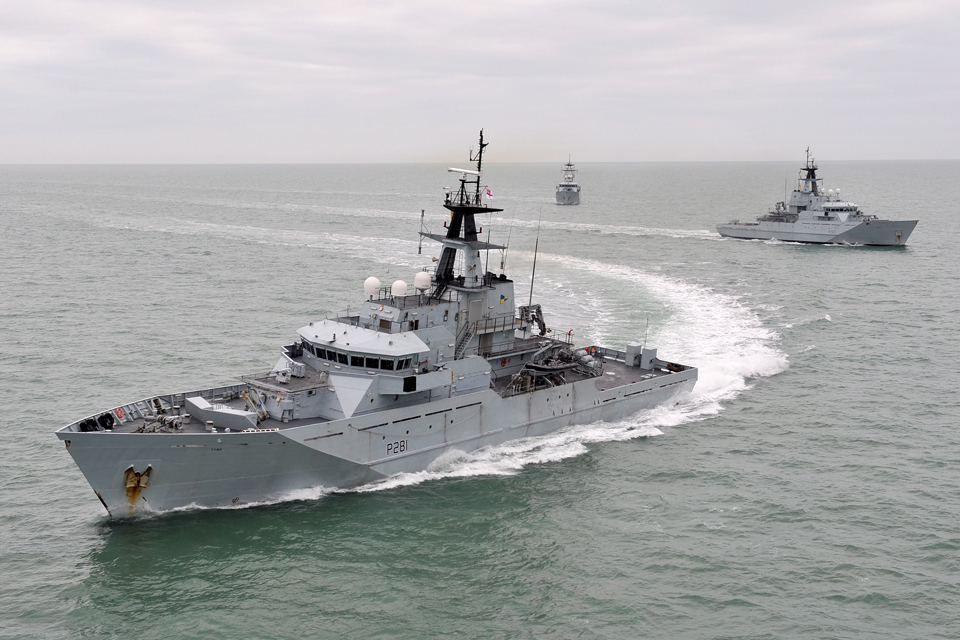



/http%3A%2F%2Fwww.meretmarine.com%2Fsites%2Fdefault%2Ffiles%2Fstyles%2Fmem_500%2Fpublic%2Fnew_objets_drupal%2F20130415224850_bresil.jpg)
